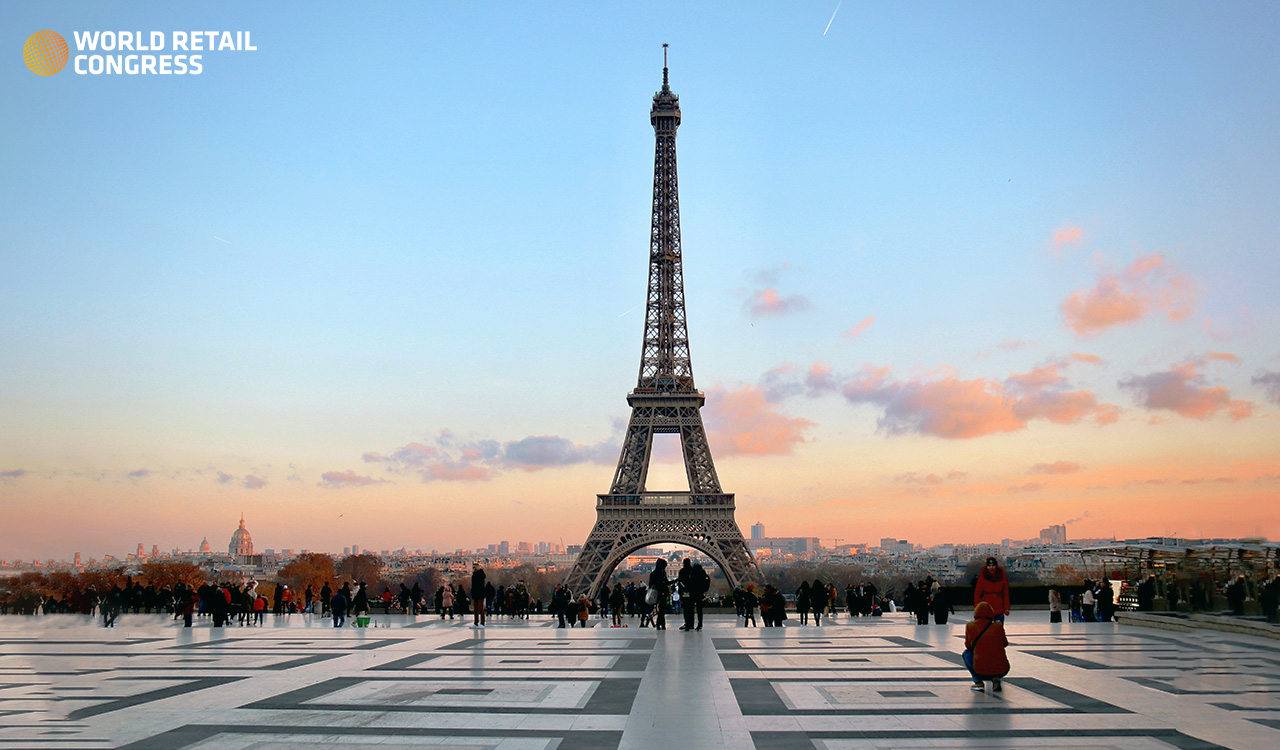In preparing for the World Retail Congress in Paris, foresight is our imperative to help the global retail industry move into the 22nd century. That said, what are the prospects for retail as we look ahead into the rest of 2024? The truth is that forecasting is becoming one of the hardest things to deliver accurately simply because the world is becoming increasingly unpredictable. As one retail CEO explained to me at the start of January, he’s realized that for the last two to three years we’ve begun each year with either high expectations of improvement and recovery or with pessimism about likely recession — but within 12 months the situation had completely flipped. Comparing the forecasts and the realities of 2021, 2022 and 2023, the unpredictable was predictable. Which makes planning very difficult.
Hajir Hajii, the CEO of Action, one of Europe’s fastest-growing retailers, reveals her mantra of “doing a little better every day.” Put another way, she says they are not striving for perfection, but to make tangible, incremental improvements day by day.
Optimism and Caution
Is the same going to be true for this year? We’re only one month into 2024 we’ve had retailers in many parts of the world announcing fairly mixed Holiday results, and then some UK and European retailers issuing profit warnings and new waves of store closures. And yet, just as trading statements were being issued with all the resultant jitteriness, more than 40,000 U.S. and international visitors attended the NRF’s Big Show in New York making it look and feel like one of the buzziest and optimistic shows for some time. It was clear that everyone was looking for answers and solutions.
As another important indicator, LVMH, the luxury behemoth, reported at the end of January full-year results that delivered a 13 percent increase in revenues to €86.2 billion and an 8 percent increase in profits to €22.8 billion which helped calm investor nerves about a slow-down in the luxury sector. Interestingly, proving that the LVMH stable of brands isn’t only about high-end luxury, Sephora helped deliver an incredible 75 percent increase in profits.
Injecting a note of caution and reality, LVMH’s Chairman and CEO, Bernard Arnault stated that these results were delivered “despite a year affected by economic and geopolitical challenges.” Underscoring these geopolitical challenges is the fact that this year the world will see an unprecedented 64 country and regional elections impacting 49 percent of the world’s population eligible to vote. That is bound to create further uncertainty for retailers around the world as consumers take stock of political and social upheaval and change.
Disruptive Digital Marketplace
Retailing has always been about weathering storms and winners and losers, in good times and bad. However, what seems clear from all the retail leaders I’ve spoken to lately is that they feel they are facing some of their greatest challenges. And more importantly, they acknowledge that the industry has to change. There are existential challenges that no one can influence referenced by Arnault and all CEOs. Then there are the structural changes brought about by the digital revolution that force all retailers and brands to rethink how they sell across channels and even more radically, examine their business models to question if it is fit for purpose going forward.
World Leadership Gathering
This year’s World Retail Congress, taking place in Paris on April 16-18th, will look to unpack these issues and try to understand the formulas for winning retailers. “High Performance Retail,” will share the strategies of a broad cross-section of retail leaders who are challenged by top-line sales growth and refocused on delivering sustainable growth and profitability. To achieve this, retailers have to double down in examining all areas of the business to find ways of making incremental gains and improvements. And, full disclosure, high performance also infuses the spirit of Paris in anticipation of the Summer Olympics Games.
Hajir Hajii, the CEO of Action, one of Europe’s fastest-growing retailers, reveals her mantra of “doing a little better every day.” Put another way, she says they are not striving for perfection, but to make tangible, incremental improvements day by day. They are looking to grow Action “quickly but carefully” whilst “simultaneously improving our business.”
This seems to resonate with other retailers that are looking for practical and actionable ways to win. It is about doing things better, more efficiently, faster and with greater results for customers, investors, employees, and the business. It also explains why NRF’s Big Show’s almost universal focus was on AI and the realisation that AI can bring any retail business incredible technological power to make the business more efficient.
The WRC Look Ahead to 2024
So, if the quick summary of the retail landscape for the next 12 months is that challenging times will require visionary leadership combined with a complete focus on the drivers of sustainable growth, how will retailers deliver that?
The World Retail Congress has identified five key pillars that retailers say are vital to deliver high-performance retail. And not so uncoincidentally, they meme the iconic, five interconnected Olympics rings.
1. Winning the Customer
Fulfilling customer expectations has been the foundation for retail through the ages. In today’s world, this has taken on even greater importance because consumers act and behave in unpredictable ways never experienced before. Being customer-centric now requires a retailer to truly put the consumer at the heart of their thinking and their focus.
The recently installed CEO of UK grocer, Morrisons, Remi Baitiéh, the turnaround wizard from Carrefour, who took over in late January states that his philosophy is all about focusing on the customer. “I try and talk to customers every single day,” he explains. “I try and talk to current customers and ex-customers. Customers who stopped shopping with us two or three years ago. I respond every day to customers who write me with complaints. Because of this, I understand more every single day, more and more what we need to do…. to make our customers happy in stores”.
For many retailers, becoming more customer-centric is leading to a change in their organizations in how they analyze and use data. It is critical to look at individual customers’ behavior and go where your customers are — whichever channel, social media group or community. Don’t assume that all customers are motivated by the same drivers. AI is already proving to be critical in helping analyze customer data and trends in a way that is helping buyers, merchandisers and marketers to get closer to consumers.
2. Winning Teams
One of the biggest issues we’ve detected from retail leaders is the realisation that the people in their organizations need a totally different focus and perspective. Increasingly, retailers need new skills and a greater diversity of people and talents to reflect their customers and meet the needs of the evolving consumer landscape. New technologies and the proliferation of sales and distribution channels and social media platforms demand different skills. How to thrive in the digital marketplace is increasingly a perspective that younger team members can bring. With that comes a recognition that a retail business can no longer be a paternalistic, top-down, command-and-control organizational model. Millennials and Gen Z employees simply won’t tolerate a business that doesn’t take their needs or their views into consideration. If you don’t give them a seat at the table, they’ll sit down anyway. Different times require different leadership styles.
3. Winning Innovation
Innovation is the lifeblood of retailing, and despite the natural tendency of many businesses to hunker down when times are tough, now is not the time for retailers to stop innovating. Consumers are looking to be inspired by new products, and despite a cost-of-living crisis in many countries, they still want to buy things that fulfil a desire and meet a need. Innovation applies across all areas of the business — starting with stores. Just because we’ve seen a strong return of in-store footfall, this cannot be taken for granted and customers will turn their backs and abandon you with a poor in-store experience. Stores also have to be connected to the online world and deliver a seamless, joined-up experience. Innovation also applies to the way that retailers need to think about the way that technology and AI can now deliver improvements and advances we never before thought possible.
4. Winning Business Models
Retail is being reshaped by a powerful combination of three forces from the lasting impact of the pandemic: the digital revolution; rapid consumer change, and economic pressures. For retailers to survive in this new reality, leadership teams will have to take increasingly radical steps to refocus or completely pivot their business models. The World Retail Congress will share how emerging business models such as value sector retailers SHEIN, Authentic Brands Group, WHP Global, and Vinted are setting the pace for retail. The right business models catering to core customers will determine who disrupts and survives, or who will be disrupted out of existence.
5. Winning With Purpose
Back in 2022, the World Retail Congress heard an impassioned plea from Paul Polman, the former CEO of Unilever. He said that to survive, all businesses must have a clear idea of what they stand for and what positive purpose they serve. That has become even more important as consumers, potential employees, and stakeholders increasingly make choices about who they want to interact with based on their values. If you don’t state what you stand for, someone else will. As Kyle Leahy, CEO of Glossier said in a session at NRF, “If your brand doesn’t resonate with people, you haven’t established a purpose.” Central to that purpose is a retailer’s contribution to sustainability and the achievement of Net Zero.
It’s a Do or Die Moment in Retail History
The job of a retail leader could not be more demanding than it is today. They not only have to navigate through the external market forces and conditions, but they also have to find ways to win, not simply survive. They have to be empathetic, mindful, curious, strategic, and courageous. Using foresight, we can predict how retailing will look very different. As Chris de Lapuente, the Chairman of LVMH’s Selective Retailing division (which houses Sephora) said, “This is a time to invest, invest, invest in brands.”
Note: World Retail Congress is a Robin Report Collaborative Partner. Please find more information on the event, including the agenda and speakers, and to register with a Robin Report 20% discount with the code ROBIN20, click here.




